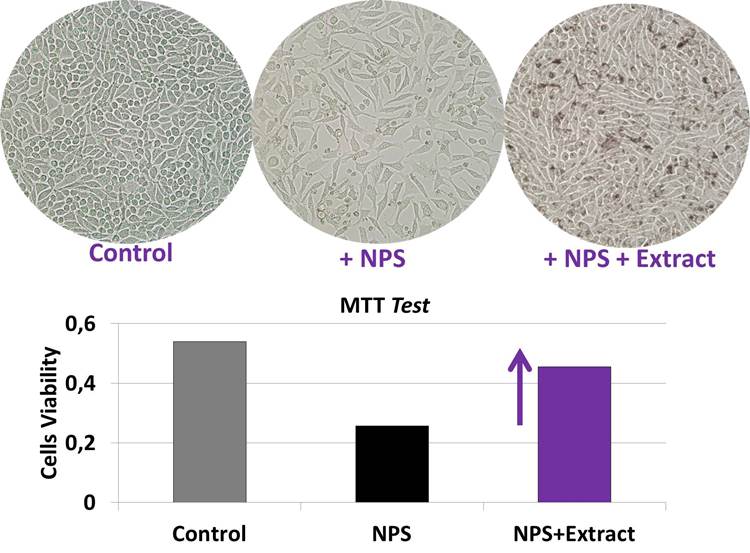Introduction: Periodontitis is a bacterially induced chronic inflammatory disease that destroys the connective tissue and bone that support teeth. It is nowadays recognized that uncontrolled inflammatory response of cells from the host defense system to oral bacteria, mostly based on genetic predisposition, is at the basis of periodontal tissue loss. Combines the classic properties of mechanical support and biological stimulation with an anti-inflammatory and an anti–osteoclastogenesis effects it is the desiderable goal. Polyphenols, present in grape, wine and winery by-products, are since long known for their anti-inflammatory properties and literature suggests they also stimulate bone regeneration. We developed an innovative paste for bone regeneration in periodontal patients (Dreamer paste) by the exploitation of polyphenol molecules extracted from winery by-products, as anti-inflammatory molecules, mixed with ceramic particles and collagen type I.

Materials and Methods: All chemicals used were purchased from Sigma - Aldirich. Collagen type I e was purchased from Sewon Cellontech Ltd. Ceramic particles was prepared mixing HA/ β-TCP (25:75 % wt.) with a porogen agent, and then sintered in disk of 15 mm and ground, to obtain particles from 200 - 300 um. Polyphenols extract were prepared from winery by-products, using Aceton:Water solution with TIMATIC automatic extractor, in a concetration of 1,5 mg/ml. Ceramic particles were mixed with polyphenols extract, collagen type I and pectin from citrus peel (from Sigma-Aldrich) in order to form a injectable paste. Release study, antioxidant assay, HPLC analysis of extract, in vitro and in vivo test were performed.
Results and Discussion: Dreamer paste, innovative bone fillers specific for bone regeneration of patients affected by periodontitis, release polyphenols, that have the capability to operate as a moderator in inflammatory response and oxidative stress damage. DPPH assay on released solution and Folin Ciacolteu test shown an high antioxidant effect, and a controlled release of polyphenols (until 1 week) such as: gallic acid, proanthocyanidins, catechins, epicatechins (HPLC study). In vitro test on Fibroblast cells shown that winery by-products extracts, protect cells from Sodium Nitroprusside, NPS (free radical generator compound) maintaining cells density and viability similar to the polystyrene control. MTT assay on cells stressed with NPS in presebce of polyphenols extract confirm that cell viability was comparable to control.

Osseointegration efficacy was evaluated implanting Dreamer paste in the medial condyle of the femur bone of rabbits for 56 days. Dreamer paste was compared with a White paste (without polyphenols extract), and a commercial gold standard paste. Hystological analysis showed an increase in a percentage of area of new bone formation for the material containing polyphenols with respect to the biomaterial without them. An area of 3.20 mm of diameter with several new‐formed spongy bone tissue could be observed, in animal defect treated with Dreamer paste, respect an a central circular area of 3.20 mm diameter containing a 1.50 mm diameter central region with a high cumulus of biomaterial surrounded by fibrotic tissue, for paste whitout polyphenols extract.

Conclusion: Laboratory and preclinical study confirm that Dreamer paste could be a solution to treat periodontal disease.
References:
[1] J. Govindaraj et al., Indian J Exp Biol, 49 (2011) 83 – 93
[2] I. Polaska et al., Eur J Pharmacol, 720 (2013) 77 – 83
[3] B. Lorrain et al., Molecules 18 (2013) 1076 - 1100